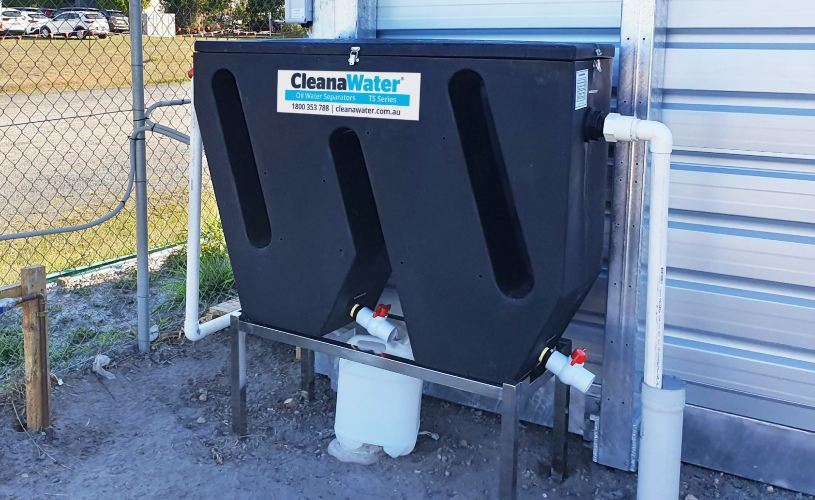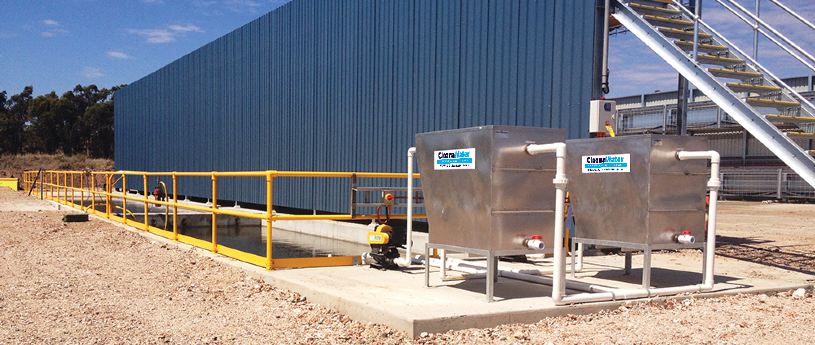Exploring effective techniques for the separation process
In many complex industrial businesses, separating oil and water effectively is crucial. This process might seem simple, but it greatly impacts protecting the environment, running operations smoothly, and managing resources responsibly.
When industries deal with oil-water separation, choosing the right method is incredibly important. Picking the best technique can mean the difference between solving problems successfully or causing unintended issues. This is where Cleanawater shines as an expert in the field. We offer custom solutions that help address challenges and lead to the best results.
Join us as we explore various methods for separating oil and water in the oil industry. We'll uncover the techniques that shape how things are done in this important field.
Challenges of mixture
Mixing oil and water might not sound like a big deal, but it brings many problems. These two substances don't mix naturally; they can mess up processes and harm the environment when they come together. When oil gets into the water, it can upset the balance of nature, make the water toxic for aquatic life, and cause lasting harm to the environment.
Minimising environmental impact
Efficiently separating oil and water is essential to reduce harm to the environment. It's not just about improving industry operations; it's a promise to protect our planet. Good separation methods are important beyond specific industries; it's a shared duty to keep our water clean and protect diverse ecosystems.
Exploring different oil-water separation methods
Diverse techniques at play
Efforts to separate oil and water effectively have led to different techniques, each designed for specific challenges. These methods are like the tools industries use to deal with oil and water mixtures.
Gravity Separation: The difference in density between oil and water causes oil to naturally float on top of water, which allows gravity to separate them into distinct layers.
Coalescence: This technique encourages oil droplets to merge into larger masses, simplifying their removal from water droplets.
Filtration: When the mixture is passed through a porous material, like a filter, it captures the tiny oil particles that are suspended, leaving behind clear water.
Unique mix, unique method
How well each method works depends on the specific characteristics of the oil and water mixture you're dealing with. Things like how thick the mixture is, how heavy the oil is, and whether there's water mixed in with the oil all influence which method will work best. As we explore these techniques, remember that choosing the right one is key to successful separation.

Evaluating the best method
Factors shaping the choice
Choosing the best separation method is a careful process influenced by several important factors. It's all about understanding the specific characteristics of the oil and water mixture to make the right decision.
Properties of the mixture
The choice of method depends on factors like how thick the mixture is (viscosity), how heavy the oil is (density), and whether there's oil in water (emulsions). Coalescence might be needed for thick mixtures, and gravity separation could be the way for heavy oil and water in oil emulsions.
Balancing efficiency and cost
Efficiency and cost-effectiveness are closely linked when making this evaluation. Some methods might need complex machinery and more resources, which can affect the overall budget. Finding the right balance between efficiency and the investment needed is crucial in decision-making.
Environmental impact
When selecting a separation method, considering its environmental impact is important. Choosing techniques that use less energy or fewer chemicals aligns with responsible practices. By carefully navigating this complex terrain, industries can make informed decisions that improve separation processes while being environmentally responsible.

Oil spill separation techniques
Urgency of addressing oil spills
Oil spills are serious environmental disasters that have widespread consequences. They disrupt ecosystems, hurt wildlife, and damage landscapes, requiring quick and efficient responses.
Specialised techniques at play
When oil spills happen, specialised methods come into play. Skimmers remove oil from the water's surface, containment booms isolate the crude oil to make recovery easier, and centrifuges improve separation efficiency.
Knowing about these techniques gives industries the means to tackle one of the most crucial issues in oil-water separation: reducing the harm caused by oil spills to our valuable ecosystems.
Choose Cleanawater
Every decision made in the field of oil-water separation has consequences that stretch into the future. It matters for today and a future where industries and ecosystems can coexist in harmony. By making informed choices and considering Cleanawater's oil-water separators, you can start a journey towards efficient, responsible, and sustainable oil-water separation.
Must Read
VapourGard: Your ultimate odour control solution
Control odours effectively and safely with CleanaWater's VapourGard system. Ideal for industries such as mining, landfill operations, recycling, and more, the VapourGard system uses lightweight partic ...
Read moreControl Odour with VapourGard
Control odours effectively and safely with CleanaWater's VapourGard system. Ideal for industries such as mining, landfill operations, recycling, and more, the VapourGard system uses lightweight partic ...
Read more